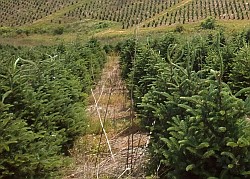Focus on Treatment Windows – Shoot Elongation
go.ncsu.edu/readext?298587
en Español / em Português
El inglés es el idioma de control de esta página. En la medida en que haya algún conflicto entre la traducción al inglés y la traducción, el inglés prevalece.
Al hacer clic en el enlace de traducción se activa un servicio de traducción gratuito para convertir la página al español. Al igual que con cualquier traducción por Internet, la conversión no es sensible al contexto y puede que no traduzca el texto en su significado original. NC State Extension no garantiza la exactitud del texto traducido. Por favor, tenga en cuenta que algunas aplicaciones y/o servicios pueden no funcionar como se espera cuando se traducen.
Português
Inglês é o idioma de controle desta página. Na medida que haja algum conflito entre o texto original em Inglês e a tradução, o Inglês prevalece.
Ao clicar no link de tradução, um serviço gratuito de tradução será ativado para converter a página para o Português. Como em qualquer tradução pela internet, a conversão não é sensivel ao contexto e pode não ocorrer a tradução para o significado orginal. O serviço de Extensão da Carolina do Norte (NC State Extension) não garante a exatidão do texto traduzido. Por favor, observe que algumas funções ou serviços podem não funcionar como esperado após a tradução.
English
English is the controlling language of this page. To the extent there is any conflict between the English text and the translation, English controls.
Clicking on the translation link activates a free translation service to convert the page to Spanish. As with any Internet translation, the conversion is not context-sensitive and may not translate the text to its original meaning. NC State Extension does not guarantee the accuracy of the translated text. Please note that some applications and/or services may not function as expected when translated.
Collapse ▲SHOOT ELONGATION: MID-MAY THROUGH JUNE

Shoot Elongation
Stages of pests. Pests continue to be very active through the spring.
- RBM — Mites move out of the old rosette buds as vegetative buds break and are blown to newly breaking buds. Mites feed at the growing tip of the shoot and start to develop new rosette buds.
- EHS — All stages present. Crawlers most common. Scales move onto new growth
- BWA — Adults laying eggs. All stages including eggs, crawlers, nymphs and adults present.
- BTA — Twig aphids very active. Adults and immatures present. Different life stages found including winged adults and the production of males. The overwintering egg are starting to be produced.
- Cinara aphids — Cinara aphids may be very active.
- SSM — All stages present including eggs, immatures, and adults.
- HRM — Rust mites activity continues until temperatures get hot.
- Predators — Most predators are active and commonly found.
Advantages to applications during shoot elongation. From bud break through shoot elongation is the traditional treatment window for rosette bud mites but other pests are also readily controlled during this time. Twig aphids are killed before they can lay the overwintering eggs. Scales are very active with peak crawler production and are most vulnerable to pesticide applications. Miticides that control eggs work well as eggs are newly produced and will hatch soon.
Disadvantages to applications during shoot elongation. One of the disadvantages to treating for pests during shoot elongation is that the foliage is tender. High pressure can break off shoots, and spraying with multiple products mixed together on hot days may cause foliage burn. Predators and pollinators are both very active and can be impacted by pesticide applications. Also if trees are to be harvested they will have to be retreated for Cinara aphid control again in the fall.
| Pesticides | RBM | EHS | BWA | BTA* | Cinara** | SSM | HRM |
|---|---|---|---|---|---|---|---|
| Bifenthrin products (Talstar, Sniper) | None | May be some suppression but not long lasting control. | Excellent | Excellent | Excellent if aphids are active. | Excellent | None |
| Asana | None | May be some suppression but not long lasting control. | Excellent | Excellent | Excellent | None | None |
| Dimethoate | Excellent | May be some suppression but not long lasting control | Poor | Excellent | Excellent but will need to treat again in fall. | Excellent control of active mites but eggs not controlled. Population may rebound. | Excellent control of active mites. Warm temperatures should reduce rust mite activity. Therefore mites typically do not rebound. |
| Asana + Dimethoate | Excellent | Excellent | Excellent | Excellent | Excellent | Excellent control of active mites but eggs not controlled. Population may rebound. | Excellent control of active mites. Warm temperatures should reduce rust mite activity. Therefore mites typically do not rebound. |
| Safari | None | Excellent | Excellent | None | Good if aphids are active. | None | None |
| Talus | None | Excellent | Not known | None | None | None | None |
*BTA control is for the following spring.
**Cinara aphid control is for that spring. If trees will be harvested in the fall, trees will have to be retreated at that time.


